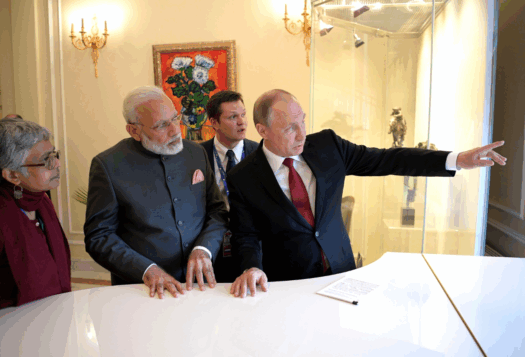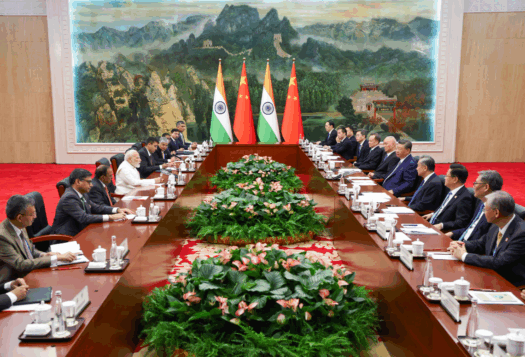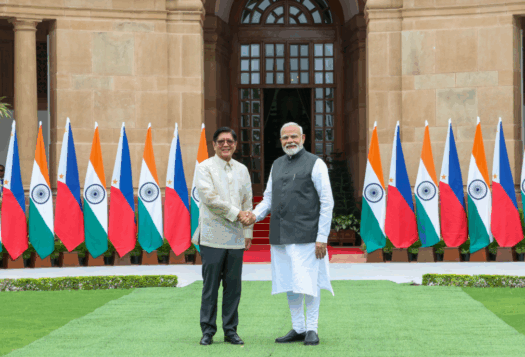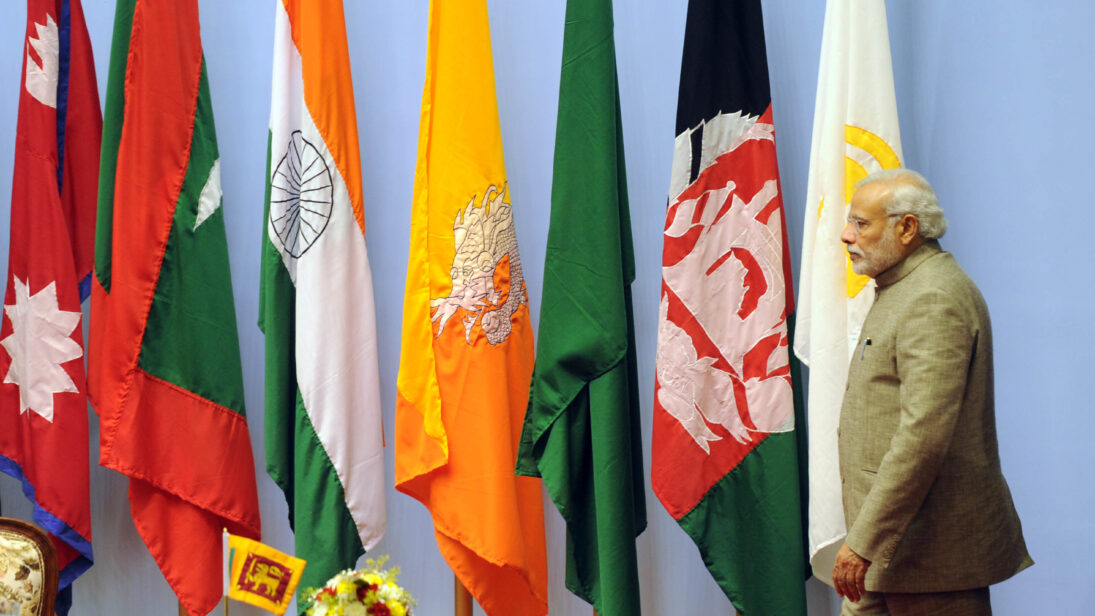
The recent turn in the India-Bangladesh relationship is the latest among a string of changes in New Delhi’s neighborhood that can be traced to a fresh trend of “nation first” rather than “neighborhood first” foreign policies in the Indian subcontinent. A nation first foreign policy is driven by domestic nationalism and is based on an overt reliance on extra-regional relationships rather than a neighborhood first policy, which is about putting a premium on friendly relations with the neighbors. While India and many of its neighbors have at different times indicated an intent to put the neighborhood first, specific policies need to be initiated to realize this outcome.
The drift towards a nation-first policy has taken different routes in the subcontinent. India through Modi’s reelection in 2019, Sri Lanka through a financial crisis in 2021, Bangladesh through what some Delhi analysts are terming a “color revolution” (though there is no evidence of extra-regional involvement), Nepal through the rigors of a new political system, Afghanistan due to a brutal civil war, Myanmar through a military coup and ensuing civil war, and Pakistan through a difficult history of hybrid civil-military dysfunction. This has led to scholars in India questioning the utility of the term “South Asia” in a region deeply divided.
South Asia has long been defined in New Delhi as the core sphere of Indian influence, however, a region-wide imbalance between neighborhood-first and the de-facto nation-first policies signals a troubling strategic shift. Though the demise of the term “South Asia” is premature, it is on life-support. There are calls in Washington for the United States to revive a separate South Asia strategy aligned more with Indo-Pacific priorities rather than those of the subcontinent proper, further diluting South Asia as traditionally defined by India. However, even while extra-regional actors such as China and the United States have been cautiously enlarging their influence in the subcontinent, the principal contradiction is among the countries of the region themselves. In fact, a neighborhood-centered approach has much to offer the countries in the region. To achieve sustainable regional unity within South Asia, nations would have to abandon short-term nationalist politics in favor of a collaborative approach with their neighbors based on mutual accommodation and widespread buy-in, wherein pragmatic economic partnerships are balanced with institutional political engagement.
To achieve sustainable regional unity within South Asia, nations would have to abandon short-term nationalist politics in favor of a collaborative approach with their neighbors based on mutual accommodation and widespread buy-in, wherein pragmatic economic partnerships are balanced with institutional political engagement.
Neighborhood First to Nation First
India has positioned itself as a priority partner for its neighbors in South Asia, contributed meaningfully to their economies, and has a long history of supporting its neighbors in times of crisis. During the Afghan civil war, it was India that supported the aspirations of the ordinary Afghans. During Sri Lanka’s financial crisis, India’s support more than say the International Monetary Fund’s or China’s allowed Sri Lankans to tide over the worst moments. During the Nepal earthquake, it was India that was one of the first responders. During the recent Bangladesh crisis, irrespective of how one sees the situation, it can be argued that India providing sanctuary to its long-term partner Sheikh Hasina can be seen as its commitment to regional relationships. While there is sometimes a perception of a partisan approach from India in terms of its political preferences, Indian engagement has by and large been quite broad and has had profound impact on countries in South Asia.
However, in recent years, countries have begun to feel the need to diversify away from India, seeking to prioritize the pursuit of national interests through relationships outside the region instead of centering their policies on the neighborhood. Sri Lanka’s Indian Ocean priorities led it to enter into a strategic partnership with China over the financing of the Hambantota port. Additionally, beyond the invitation of extra-regional actors into the subcontinent, the complex interplay of domestic politics and the need for economic development in these countries have led to an increase in anti-India sentiments. This is exemplified by the “India Out” rhetoric seen in the leadup to elections in Nepal, Bangladesh and Maldives. However, on many occasions, such campaigns are more a result of domestic and ideological factors and less due to specific Indian behavior. For instance, in Bangladesh, a revised version of history is being introduced in school syllabi. In Nepal, territorial issues and development tension at the national and local levels have led to an anti-India sentiment. This anti-India rhetoric in domestic electoral politics works against these country’s stated goals of increased regional connectivity and partnership.
It can be argued that animus towards India in the neighborhood is more a result of countries in the region playing off regional powers to maximize their gains. However, critics of Indian foreign policy argue that the onus of driving the region towards integration lies on New Delhi and its core national interests demand friendly and robust relations in the subcontinent. Reducing instability in the neighborhood not only benefits neighboring countries but is also in India’s own political interest, as the potential for conflict spillover due to regional nationalism is high. In 2022, the World Bank reported that regional trade in South Asia only accounted for 5 percent of total trade. Curbing nation first sentiments and focusing on a neighborhood approach centered on trade can directly help accelerate a country’s socio-economic development. A neighborhood first policy will also allow the neighbors to more effectively engage with extra regional actors such as the United States, China and the European Union.
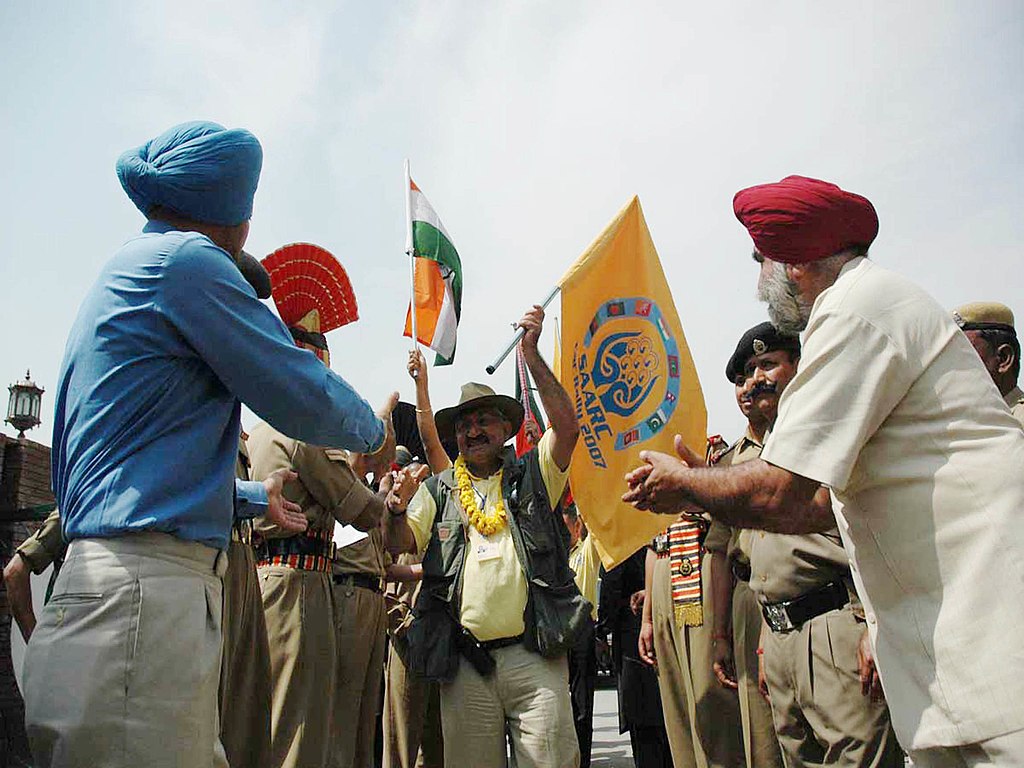
Some formidable critiques of Indian foreign policy such as the need for more diplomatic approach towards Nepal, engagement with opposition forces in Bangladesh, driving regional integration thorough South Asian Association for Regional Cooperation (SAARC) and Bay of Bengal Initiative for Multisectoral Technical and Economic Cooperation (BIMSTEC), more efficient delivery of projects in the neighborhood, engaging in dialogue with Pakistan, supporting democracy in Myanmar, and desisting from treating China as a bogey are taken seriously in New Delhi. In turn, India’s neighbors should also seriously reassess the importance of regional multilateralism, in which the neighborhood is championed, because they stand to gain from India’s economic growth, growing market, and its regional connectivity projects.
Potential for Pragmatism and Collaboration
In order to support a strong region-wide neighborhood first policy, India and its neighbors need to negotiate clear 5-year action plans with institutional and political dialogue. While political dialogue at the highest levels may be complex for India-Bangladesh due to the nature of the caretaker government, India-Pakistan because of long-standing conflicts, or India-Afghanistan with a Taliban government, there are practical steps that are critical to take at the people-to-people level after mutual consultation. This includes resuming bilateral trade, calibrated visa approvals, and connectivity initiatives. Both India and these neighbors have been resistant to such steps due to a surge in domestic nationalism.
Since Bangladesh and Nepal seem to prefer a more transactional approach, India must offer mutually negotiated and mutually beneficial deals to these countries. However, strategic issues such as minority rights, water sharing, border security, and representation of certain groups are issues that need to be tackled through sensitive and high-level political channels, such as at the foreign secretary and national security adviser levels. For example, government officials in Bangladesh have been much more cautious in discussing the relationship with India in the political and public spheres, compared to publicly shown goodwill with the United States and China. For example, Joe Biden in his meeting with Mohammed Yunus welcomed further engagement between the two governments and offered continued U.S. support as Bangladesh implements its new reform agenda. Whereas, Bangladesh’s army chief General Waker-Us-Zaman said ties with India are based on “give and take”, while China is a “partner” in Bangladesh’s development. In break from tradition, Nepali Prime Minister KP Oli chose China instead of India for his first visit. Revitalized engagement between India and its neighbors can help re-center the importance of South Asian focused diplomacy.
The recent trend of prioritizing narrow national interests over regional cooperation has hindered integration efforts, while reactive short-term policies driven by domestic instability have only deepened these divisions.
Additionally, India needs to work with the United States, Europe, China, and Russia to guard against extra-regional influence that is detrimental to Indian interests. This can be achieved through increased bilateral mechanisms with these great powers. Concerning China, a recent thaw in ties signals a potential for increased engagement. In the past, China has proposed an India-China plus model in South Asia, recognizing India’s leadership in the region. China also supported Indian participation in the Belt and Road Initiative and a training program for Afghan diplomats jointly conducted by India and China under this format in 2018. While there will be caution in India’s approach to China due to an element of competition between the two, wishing away Chinese involvement is not a realistic goal for New Delhi. India and China need to begin limited engagement on South Asia.
Leveraging global connectivity funding initiatives such as Partnership for Global Infrastructure Initiatives and Global Gateway in addition to democracy promotion and a human rights dialogue will be important to Delhi’s success. These have a greater chance of impact through trilateral or multilateral cooperation rather than bilateral engagement, which has caused problems. On the other hand, while India may need to abjure social and cultural influence as the neighbors seek a more pragmatic approach, maintaining some presence in the region’s affairs is essential for New Delhi’s security. Thus, in the spirit of mutual accommodation, India would offer economic and regional development opportunities while neighbors would have to ensure political stability and a safe and enabling environment, to safeguard the future of South Asia as a concept.
Regional integration would have to be based on and responsive to the needs of all South Asian countries, cementing widespread buy-in by establishing integrated check posts and striking agreements facilitating trade and mobility. However, rebuilding regional ties requires a return to long-term strategic thinking, both within South Asia and with the help of global partners. The recent trend of prioritizing narrow national interests over regional cooperation has hindered integration efforts, while reactive short-term policies driven by domestic instability have only deepened these divisions. To achieve lasting stability in South Asia, countries must restore the delicate balance between national priorities and the reality of regional interdependence, recommitting to the principles of collective progress.
Also Read: Why BIMSTEC’s Maritime Transport Agreement is Essential for India
Views expressed are the author’s own and do not necessarily reflect the positions of South Asian Voices, the Stimson Center, or our supporters.
***
Image 1: MEAphotogallery via Flickr
Image 2: Indian Ministry of External Affairs via Wikimedia Commons
